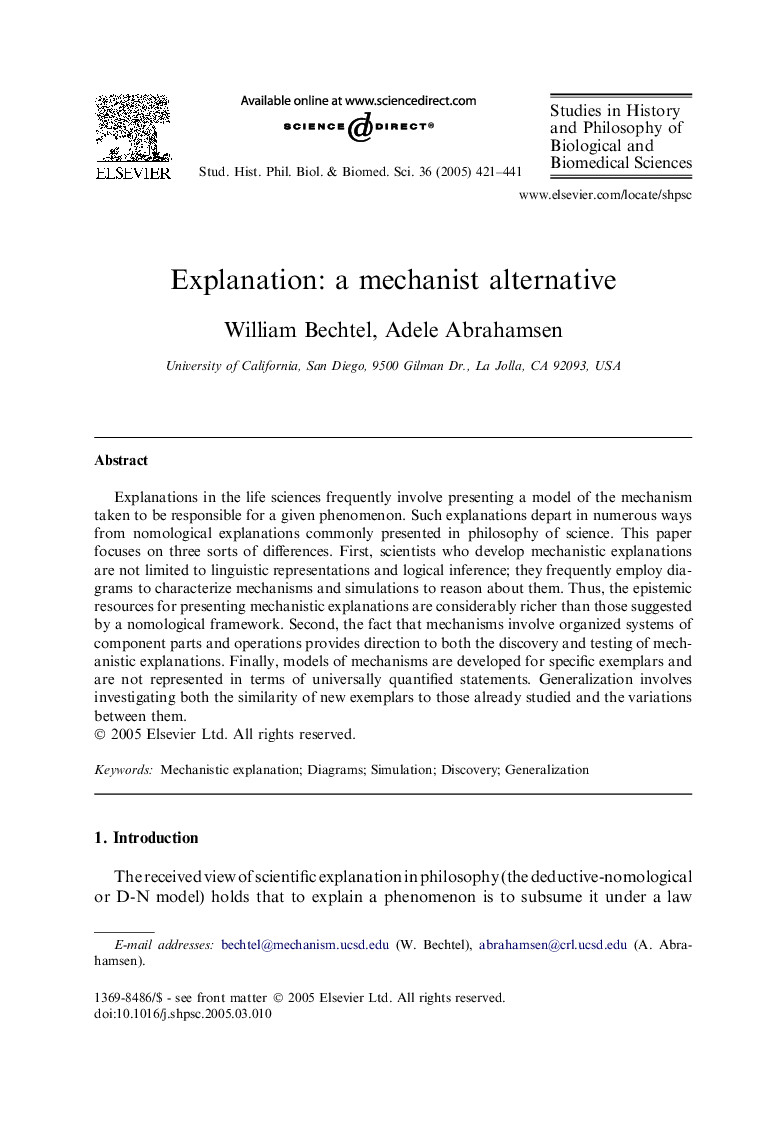| Article ID | Journal | Published Year | Pages | File Type |
|---|---|---|---|---|
| 9743093 | Studies in History and Philosophy of Science Part C: Studies in History and Philosophy of Biological and Biomedical Sciences | 2005 | 21 Pages |
Abstract
Explanations in the life sciences frequently involve presenting a model of the mechanism taken to be responsible for a given phenomenon. Such explanations depart in numerous ways from nomological explanations commonly presented in philosophy of science. This paper focuses on three sorts of differences. First, scientists who develop mechanistic explanations are not limited to linguistic representations and logical inference; they frequently employ diagrams to characterize mechanisms and simulations to reason about them. Thus, the epistemic resources for presenting mechanistic explanations are considerably richer than those suggested by a nomological framework. Second, the fact that mechanisms involve organized systems of component parts and operations provides direction to both the discovery and testing of mechanistic explanations. Finally, models of mechanisms are developed for specific exemplars and are not represented in terms of universally quantified statements. Generalization involves investigating both the similarity of new exemplars to those already studied and the variations between them.
Related Topics
Life Sciences
Agricultural and Biological Sciences
Agricultural and Biological Sciences (General)
Authors
William Bechtel, Adele Abrahamsen,
